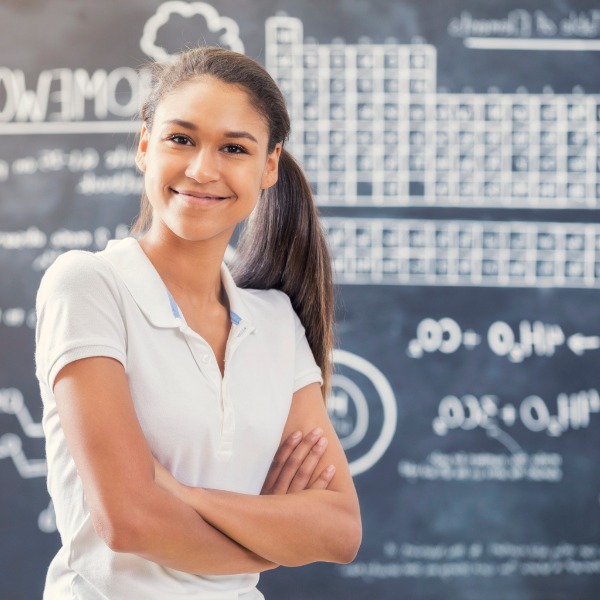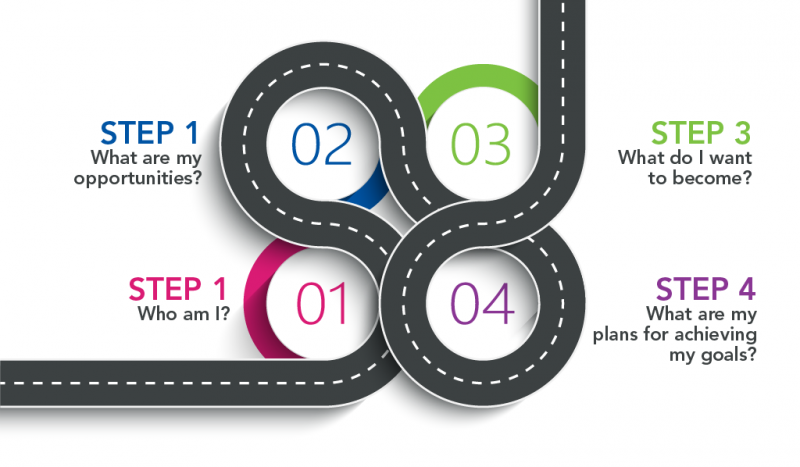STEM Skills and Self-Exploration

Confident STEM student (SDI Productions, iStockphoto)

Confident STEM student (SDI Productions, iStockphoto)
How does this align with my curriculum?
Curriculum Alignment
AB
8
Career and Technology Foundations (CTF) (revised 2019)
CTF is exploring interests, passions and skills while making personal connections to career
possibilities.
AB
9
Career and Technology Foundations (CTF) (revised 2019)
CTF is exploring interests, passions and skills while making personal connections to career
possibilities.
BC
11
Career-Life Connections (2018)
Big Idea: Career-life development includes ongoing cycles of exploring, planning, reflecting, adapting, and deciding.
BC
12
Career-Life Connections (2018)
Big Idea: Career-life development includes ongoing cycles of exploring, planning, reflecting, adapting, and deciding.
BC
12
Career-Life Connections (2018)
Big Idea: Career-life decisions influence and are influenced by internal and external factors, including local and global trends.
BC
12
Career-Life Connections (2018)
Big Idea: Engaging in networks and reciprocal relationships can guide and broaden career-life awareness and options.
BC
12
Career-Life Connections (2018)
Big Idea: Lifelong learning and active citizenship foster career-life opportunities for people and communities.
BC
11
Career-Life Connections (2018)
Big Idea: Career-life decisions influence and are influenced by internal and external factors, including local and global trends.
BC
11
Career-Life Connections (2018)
Big Idea: Engaging in networks and reciprocal relationships can guide and broaden career-life awareness and options.
BC
11
Career-Life Connections (2018)
Big Idea: Lifelong learning and active citizenship foster career-life opportunities for people and communities.
ON
10
Career Studies Grade 10, OPEN (GLC2O) (2019)
Strand B. Exploring and Preparing for the World of Work
ON
10
Career Studies Grade 10, OPEN (GLC2O) (2019)
Strand A. Developing the Skills, Strategies, and Habits Needed to Succeed
YT
11
Career-Life Connections (2018)
Big Idea: Career-life development includes ongoing cycles of exploring, planning, reflecting, adapting, and deciding.
YT
11
Career-Life Connections (2018)
Big Idea: Career-life decisions influence and are influenced by internal and external factors, including local and global trends.
YT
11
Career-Life Connections (2018)
Big Idea: Engaging in networks and reciprocal relationships can guide and broaden career-life awareness and options.
YT
11
Career-Life Connections (2018)
Big Idea: Lifelong learning and active citizenship foster career-life opportunities for people and communities.
YT
12
Career-Life Connections (2018)
Big Idea: Career-life development includes ongoing cycles of exploring, planning, reflecting, adapting, and deciding.
YT
12
Career-Life Connections (2018)
Big Idea: Career-life decisions influence and are influenced by internal and external factors, including local and global trends.
YT
12
Career-Life Connections (2018)
Big Idea: Engaging in networks and reciprocal relationships can guide and broaden career-life awareness and options.
YT
12
Career-Life Connections (2018)
Big Idea: Lifelong learning and active citizenship foster career-life opportunities for people and communities.
AB
8
Career and Technology Foundations (CTF) (revised 2019)
CTF is working independently and with others while exploring careers and technology.
AB
9
Career and Technology Foundations (CTF) (revised 2019)
CTF is working independently and with others while exploring careers and technology.
BC
8
Career Education 8 (2016)
Big Idea: Our career paths reflect the personal, community, and educational choices we make.
BC
9
Career Education 9 (2016)
Big Idea: Our career paths reflect the personal, community, and educational choices we make.
BC
8
Career Education 8 (2016)
Big Idea: Reflecting on our preferences and skills helps us identify the steps we need to take to achieve our career goals.
BC
8
Career Education 8 (2016)
Big Idea: The value of work in our lives, communities, and society can be viewed from diverse perspectives.
BC
8
Career Education 8 (2016)
Big Idea: Achieving our learning goals requires effort and perseverance.
BC
9
Career Education 9 (2016)
Big Idea: Reflecting on our preferences and skills helps us identify the steps we need to take to achieve our career goals.
BC
9
Career Education 9 (2016)
Big Idea: The value of work in our lives, communities, and society can be viewed from diverse perspectives.
BC
9
Career Education 9 (2016)
Big Idea: Achieving our learning goals requires effort and perseverance.
MB
12
Grade 12 Career Development: Life/Work Transitioning (2017)
Unit 4: Job Seeking and Job Maintenance
MB
9
Grade 9 Career Development: Life/Work Exploration (2017)
Unit 5: Career and Community Experiences
MB
10
Grade 10 Career Development: Life/Work Planning (2017)
Unit 4: Job Seeking and Job Maintenance
MB
10
Grade 10 Career Development: Life/Work Planning (2017)
Unit 5: Career and Community Experiences
MB
11
Grade 11 Career Development: Life/Work Building (2017)
Unit 4: Job Seeking and Job Maintenance
MB
11
Grade 11 Career Development: Life/Work Building (2017)
Unit 5: Career and Community Experiences
MB
12
Grade 12 Career Development: Life/Work Transitioning (2017)
Unit 5: Career and Community Experiences
ON
11
Communications Technology, Grade 11 University/College Preparation (TGJ3M) (2009)
Strand D: Professional Practices and Career Opportunities
ON
12
Communications Technology, Grade 12 (TGJ4M) (2009)
Strand D: Professional Practices and Career Opportunities
ON
11
Computer Engineering Technology, Grade 11, University/College Preparation (TEJ3M) (2009)
Strand D: Professional Practices and Career Opportunities
ON
12
Computer Engineering Technology, Grade 12, University/College Preparation (TEJ4M) (2009)
Strand D: Professional Practices and Career Opportunities
ON
11
Transportation Technology, Grade 11, College Preparation (TTJ3C) (2009)
Strand D: Professional Practices and Career Opportunities
ON
12
Transportation Technology, Grade 12, College Preparation (TTJ4C) (2009)
Strand D: Professional Practices and Career Opportunities
ON
11
Manufacturing Engineering Technology, Grade 11, University/College Preparation (TMJ3M) (2009)
Strand D: Professional Practices and Career Opportunities
ON
12
Manufacturing Engineering Technology, Grade 12, University/College Preparation (TMJ4M) (2009)
Strand D: Professional Practices and Career Opportunities
ON
11
Hospitality and Tourism, Grade 11, College Preparation (TFJ3C)(2009)
Strand D: Professional Practices and Career Opportunities
ON
12
Hospitality and Tourism, Grade 12, College Preparation (TFJ4C) (2009)
Strand D: Professional Practices and Career Opportunities
ON
11
Health Care, Grade 11, University/College Preparation (TPJ3M) (2009)
Strand D: Professional Practices and Career Opportunities
ON
12
Health Care, Grade 12, University/College Preparation (TPJ4M) (2009)
Strand D: Professional Practices and Career Opportunities
ON
11
Hairstyling and Aesthetics, Grade 11, Workplace Preparation (TXJ3E) (2009)
Strand D: Professional Practices and Career Opportunities
ON
12
Hairstyling and Aesthetics, Grade 12, Workplace Preparation (TXJ4E) (2009)
Strand D: Professional Practices and Career Opportunities
ON
11
Green Industries, Grade 11, University/College Preparation (THJ3M) (2009)
Strand D: Professional Practices and Career Opportunities
ON
12
Green Industries, Grade 12, University/College Preparation (THJ4M) (2009)
Strand D: Professional Practices and Career Opportunities
ON
9
Exploring Technologies, Grade 9, Open (TIJ1O) (2009)
Strand D: Professional Practices and Career Opportunities
ON
11
Construction Engineering Technology, Grade 11, College Preparation (TCJ3C) (2009)
Strand E: Professional Practices and Career Opportunities
ON
12
Construction Engineering Technology, Grade 12, College Preparation (TCJ4C) (2009)
Strand E: Professional Practices and Career Opportunities
YT
8
Career Education 8 (2016)
Big Idea: Our career paths reflect the personal, community, and educational choices we make.
YT
8
Career Education 8 (2016)
Big Idea: Reflecting on our preferences and skills helps us identify the steps we need to take to achieve our career goals.
YT
8
Career Education 8 (2016)
Big Idea: The value of work in our lives, communities, and society can be viewed from diverse perspectives.
YT
8
Career Education 8 (2016)
Big Idea: Achieving our learning goals requires effort and perseverance.
YT
9
Career Education 9 (2016)
Big Idea: Reflecting on our preferences and skills helps us identify the steps we need to take to achieve our career goals.
YT
9
Career Education 9 (2016)
Big Idea: The value of work in our lives, communities, and society can be viewed from diverse perspectives.
YT
9
Career Education 9 (2016)
Big Idea: Our career paths reflect the personal, community, and educational choices we make.
YT
9
Career Education 9 (2016)
Big Idea: Achieving our learning goals requires effort and perseverance.
BC
10
Career-Life Education (2018)
Big Idea: Career-life choices are made in a recurring cycle of planning, reflecting, adapting, and deciding.
BC
10
Career-Life Education (10, 11, 12) (2018)
Big Idea: Career-life decisions are influenced by internal and external factors, including local and global trends.
BC
10
Career-Life Education (10, 11, 12) (2018)
Big Idea: Cultivating networks and reciprocal relationships can support and broaden career-life awareness and options.
BC
10
Career-Life Education (10, 11, 12) (2018)
Big Idea: Lifelong learning fosters career-life opportunities.
BC
11
Career-Life Education (2018)
Big Idea: Career-life choices are made in a recurring cycle of planning, reflecting, adapting, and deciding.
BC
11
Career-Life Education (2018)
Big Idea: Career-life decisions are influenced by internal and external factors, including local and global trends.
BC
11
Career-Life Education (2018)
Big Idea: Cultivating networks and reciprocal relationships can support and broaden career-life awareness and options.
YT
10
Career-Life Education (2018)
Big Idea: Career-life choices are made in a recurring cycle of planning, reflecting, adapting, and deciding.
YT
10
Career-Life Education (2018)
Big Idea: Career-life decisions are influenced by internal and external factors, including local and global trends.
YT
10
Career-Life Education (2018)
Big Idea: Cultivating networks and reciprocal relationships can support and broaden career-life awareness and options.
YT
11
Career-Life Education (2018)
Big Idea: Career-life choices are made in a recurring cycle of planning, reflecting, adapting, and deciding.
YT
11
Career-Life Education (2018)
Big Idea: Career-life decisions are influenced by internal and external factors, including local and global trends.
YT
11
Career-Life Education (2018)
Big Idea: Cultivating networks and reciprocal relationships can support and broaden career-life awareness and options.
YT
10
Career-Life Education (10, 11, 12) (2018)
Big Idea: Career-life decisions are influenced by internal and external factors, including local and global trends.
YT
10
Career-Life Education (10, 11, 12) (2018)
Big Idea: Cultivating networks and reciprocal relationships can support and broaden career-life awareness and options.
YT
10
Career-Life Education (10, 11, 12) (2018)
Big Idea: Lifelong learning fosters career-life opportunities.
ON
9
Science Grade 9 Applied (SNC1P) (2008)
Strand A. Scientific Investigation Skills and Career Exploration
ON
9
Science Grade 9 Academic (SNC1D) (2008)
Strand A. Scientific Investigation Skills and Career Exploration
ON
10
Science Grade 10 Academic (SNC2D) (2008)
Strand A. Scientific Investigation Skills and Career Exploration
ON
10
Science Grade 10 Applied (SNC2P) (2008)
Strand A. Scientific Investigation Skills and Career Exploration
ON
10
Digital Technology and Innovations in the Changing World (2023)
A. Computational Thinking and Making Connections
BC
8
Career Education 8 (2016)
Big Idea: Adapting to economic and labour market changes requires flexibility.
ON
10
Career Studies Grade 10, OPEN (GLC2O) (2019)
Strand C. Planning and Financial Management to Help Meet Postsecondary Goals
YT
8
Career Education 8 (2016)
Big Idea: Adapting to economic and labour market changes requires flexibility.
